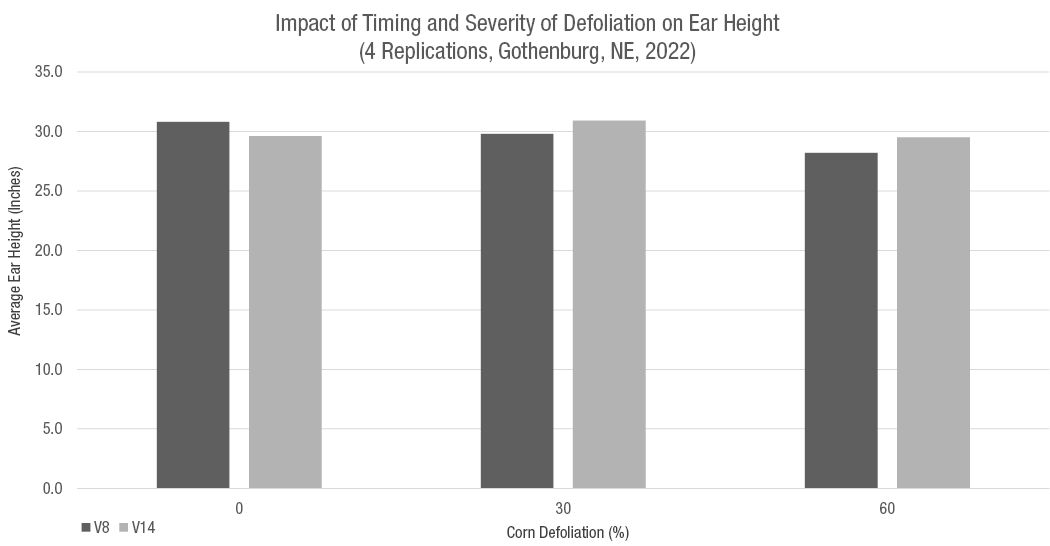Impact of Defoliation Timing and Severity in Short Stature Corn
March 7, 2023
TRIAL OBJECTIVE
- Weather events such as hail can be unpredictable and destructive to corn crops, resulting in reduced plant leaf area and plant stands due to physical damage, ultimately lowering yields.
- The growth recovery of corn plants depends on the timing and severity of hail damage.
- Assessing the health of the crop after a hail event is critical for replant decisions.
- The objective of this study was to determine the effect of two defoliation timings and three levels of defoliation severity, simulating a hail damage event, on corn yield potential.
RESEARCH SITE DETAILS

- The trial was arranged as a randomized complete block design with four replications and two treatment factors, defoliation timing, and severity (Figure 1).
- Defoliation timing (corn growth stage): V8, V14
- Defoliation severity (%): 0, 30, 60
- The corn product planted in the entire trial was a 112 RM short stature corn.
- Hail damage was simulated on corn plants using a weed trimmer to damage leaves and reduce the leaf surface area, corresponding to defoliation severity.
- Corn plants were fully irrigated throughout the growing season for a total of 9 inches of irrigation.
- The trial was strip-tilled on 04/27/2022 and a base fertilizer application of 29 lbs of nitrogen (N/Acre), 60 lbs of phosphorus (P/Acre), 25 lbs of sulfur (S/Acre), and 0.25 lbs Zinc (Zn/Acre) strip-till applied.
- An additional 176 lbs of nitrogen (N/Acre) was applied at the V7 growth stage with a Y-drop spray attachment.
- Weeds were managed with a basic herbicide application at planting of Corvus® herbicide at 5 oz/acre, Roundup PowerMAX® at 32 oz/acre, Atrazine 4L at 1 lb/acre, and Harness® herbicide at 32oz/acre.
- Total grain weight, test weight, and moisture content were collected with a plot combine harvester to calculate yield per acre.

UNDERSTANDING THE RESULTS
- There was not a significant interaction between defoliation timing and severity, however, defoliation timing and severity were each significant at a confidence level of α=0.1.
- Earlier defoliation timing at the V8 corn growth stage had lower yield impact than defoliation at the V14 corn growth stage (Figure 2).
- Increasing defoliation severity resulted in significantly reduced average corn yields, ranging from 215 bushels/acre at 0% defoliation to 179 bushels/acre with 60% defoliation (averaged across data from both growth stages) (Figure 2).
- Despite the yield differences by defoliation timing and severity, there were no statistical differences in ear and plant height (Figure 3 & Figure 4).



KEY LEARNINGS
- Hail damage is unpredictable and can occur anytime during the growing season, however, this study found that damage to corn crops at later growth stages can negatively affect yields more than damage at earlier growth stages.
- In 2022, increasing hail damage severity reduced average corn yields significantly, indicating that the loss of leaf surface area due to physical damage negatively impacted yield.
- Ultimately, the decision to replant after hail damage events depends on the health of the corn stand and growing conditions.
- Farmers should work with their local seeds sales team member to help identify the best adapted corn product for their production systems.
1222_190000